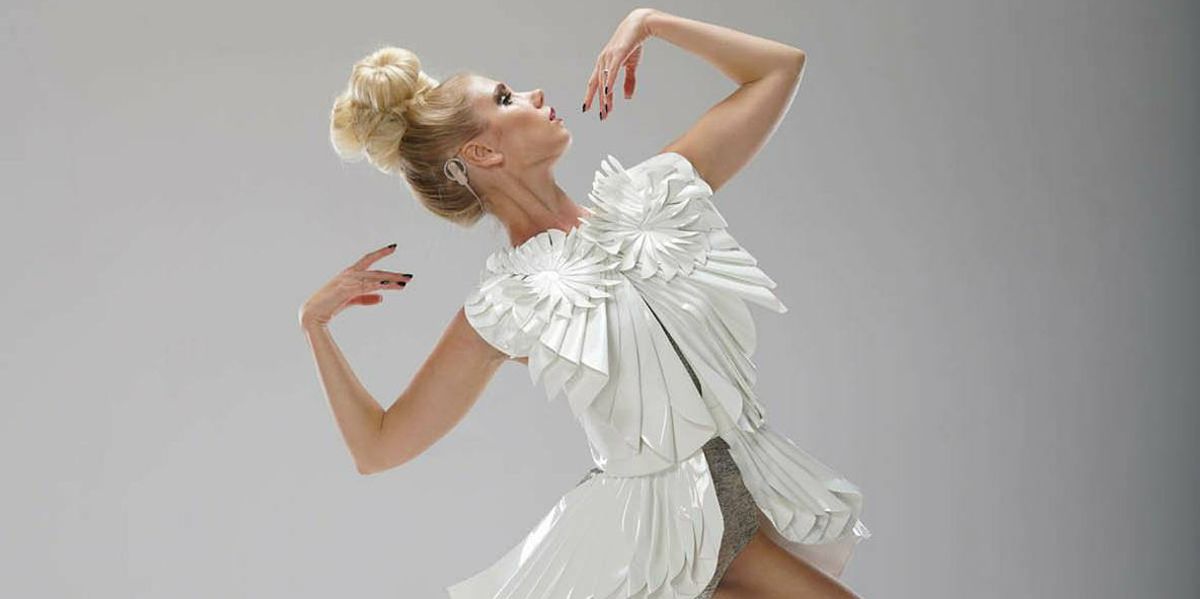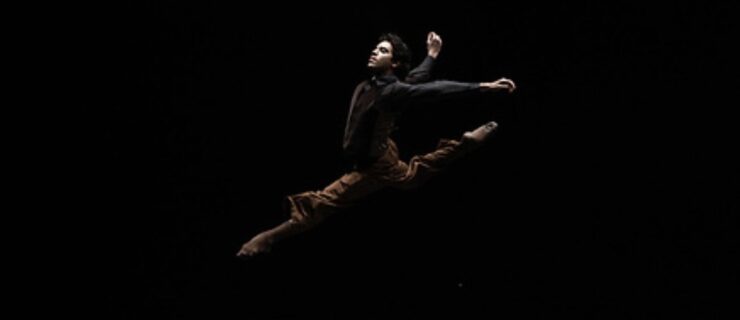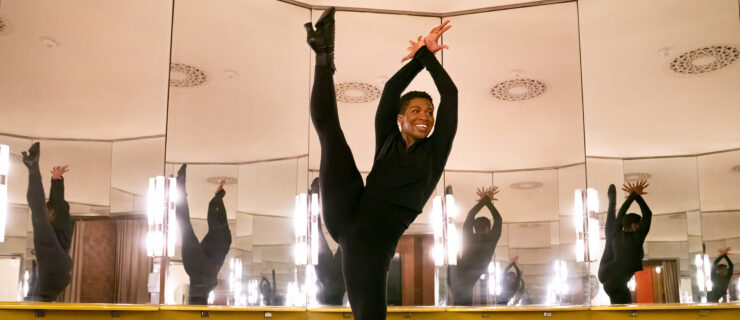Not Your Average Dancer: Meet the Deaf Dancer Defying Stereotypes
Simone Botha Welgemoed is the ultimate dancer: She’s performed with ballet companies, competed in dance competitions, and toured internationally on commercial gigs. She’s currently a member of Bovim Ballet, while also juggling freelance jobs on films in her home of Cape Town, South Africa. But she’s missing something essential to most dancers: her hearing.
Welgemoed was born with profound bilateral sensory neural hearing loss, meaning she’s completely deaf. At 22 months old, she received a cochlear implant, which partially restored her hearing. “Without my cochlear implant. I’d have been lost in a world of silence. I’m forever grateful for the operation that changed my life,” she says.
So it’s no wonder Welgemoed spoke out when Virgin Active, a fitness brand she models for, Photoshopped her cochlear implant out of an ad. After Welgemoed voiced her frustration, the company apologized and reproduced the photos with Welgemoed’s implants intact. Welgemoed is determined to use this experience, along with her accomplished dance career, as an opportunity to educate people about the deaf community.
We talked with Welgemoed to find out how she dances deaf, and which ballet legends have given her the courage to defy the expectations of others.
What drew you to dance?
It has been a part of my life for as long as I can remember. My older sister took ballet classes, and I tagged along with my mother to watch. I kept hopping off my mom’s lap to try out the mesmerizing movements. Little did I know that the ballet teacher, Natalie Swanepoel, was watching my every move. Eventually she told my mom that it was obvious to her that my body and soul wanted to be on the dance floor. So I began ballet classes at the tender age of two.
 Photo by Vikram Bawa, courtesy Welgemoed
Photo by Vikram Bawa, courtesy Welgemoed
How are you able to dance without hearing the music?
To me, music is really just beautiful background noise. My eyes and sense of touch, along with my body rhythm and muscle memory, are the senses that allow me to perform in time with the music.
In rehearsal, a piece of choreography is rehearsed so many times that my body remembers how fast, slow, or sharp a movement has to be executed. When I’m performing in a group setting, I’m acutely aware of the other dancers. They’re my ears.
When I perform a pas de deux, my partner takes charge. Using subtle cues and gestures, he will signal when I might need to speed up or slow down. I especially need this when performing with a live orchestra, as its rhythm and tempo tend to be slightly different with every performance.
During solo performances, I’ll ask a dance friend to stand in the wings and direct me, to make sure that I start on time, reach the highlights in the music where the choreographer wants them, and end on time.
 Welgemoed dancing with Henk Opperman in Bovim Ballet’s “Private Pressley” (photo by Bill Zurich, courtesy Welgemoed)
Welgemoed dancing with Henk Opperman in Bovim Ballet’s “Private Pressley” (photo by Bill Zurich, courtesy Welgemoed)
Did you ever feel discouraged about pursuing a career in dance as a deaf person?
I’ve often been disappointed in people’s reactions to my career choice, but I’ve never been discouraged. In fact, negative reactions made me more determined, because I realized I had something to prove.
 Welgemoed and Casey Swales in “Spartacus” (photo by Bill Zurich, courtesy Welgemoed)
Welgemoed and Casey Swales in “Spartacus” (photo by Bill Zurich, courtesy Welgemoed)
What’s one of your greatest accomplishments?
As a hearing impaired dancer, performing various lead roles and corps de ballet parts in Bovim Ballet is something that I take great pride in.
Who’s your dance role model?
There are a few dancers I think of as role models. Margot Fonteyn didn’t have great feet or technique, and yet she was one of the most captivating beings ever to grace a stage. Michaela DePrince, an abused war orphan with vitiligo, didn’t let her circumstances limit her dreams of dancing. Misty Copeland’s body was considered too athletic and her skin too dark for ballet, and yet she showed everyone just how beautiful her body was. These dancers not only beat the odds, but rose from them like a phoenix rises from the ashes. That’s what I’ve been striving to do all my life.
 (Photo by Inge Bruwer, courtesy Welgemoed)
(Photo by Inge Bruwer, courtesy Welgemoed)
What advice would you give to someone who might not fit the typical mold of a dancer but wants to pursue a dance career?
There is so much room for individuality. Don’t give up until you find a way to make it work. Create your own opportunities and get creative about ways you can accentuate your strengths.
How can the dance community help make the dance world more inclusive for people with disabilities?
People with disabilities aren’t asking for extreme measures to be taken. We just want a chance: a chance at life, a chance to prove ourselves worthy, a chance to show that we can excel in the best way we know how.




